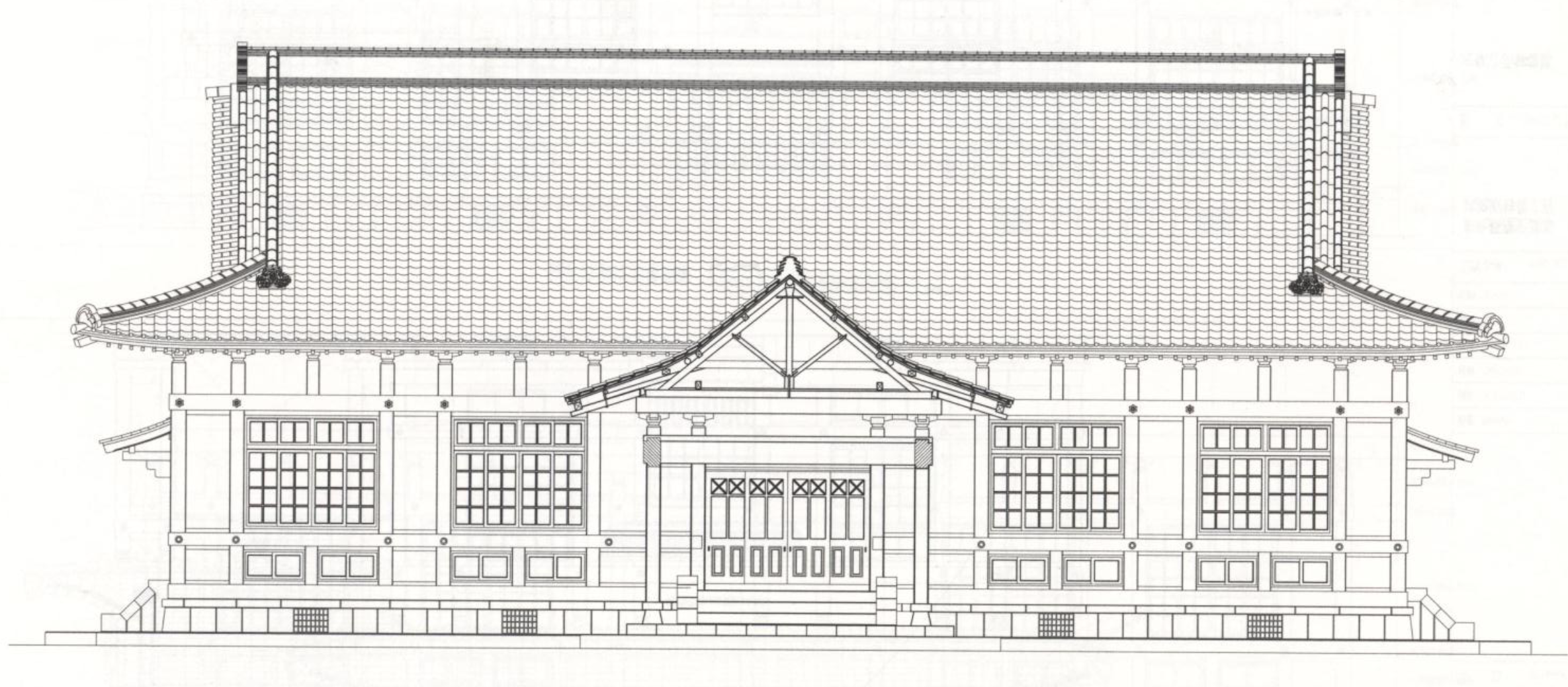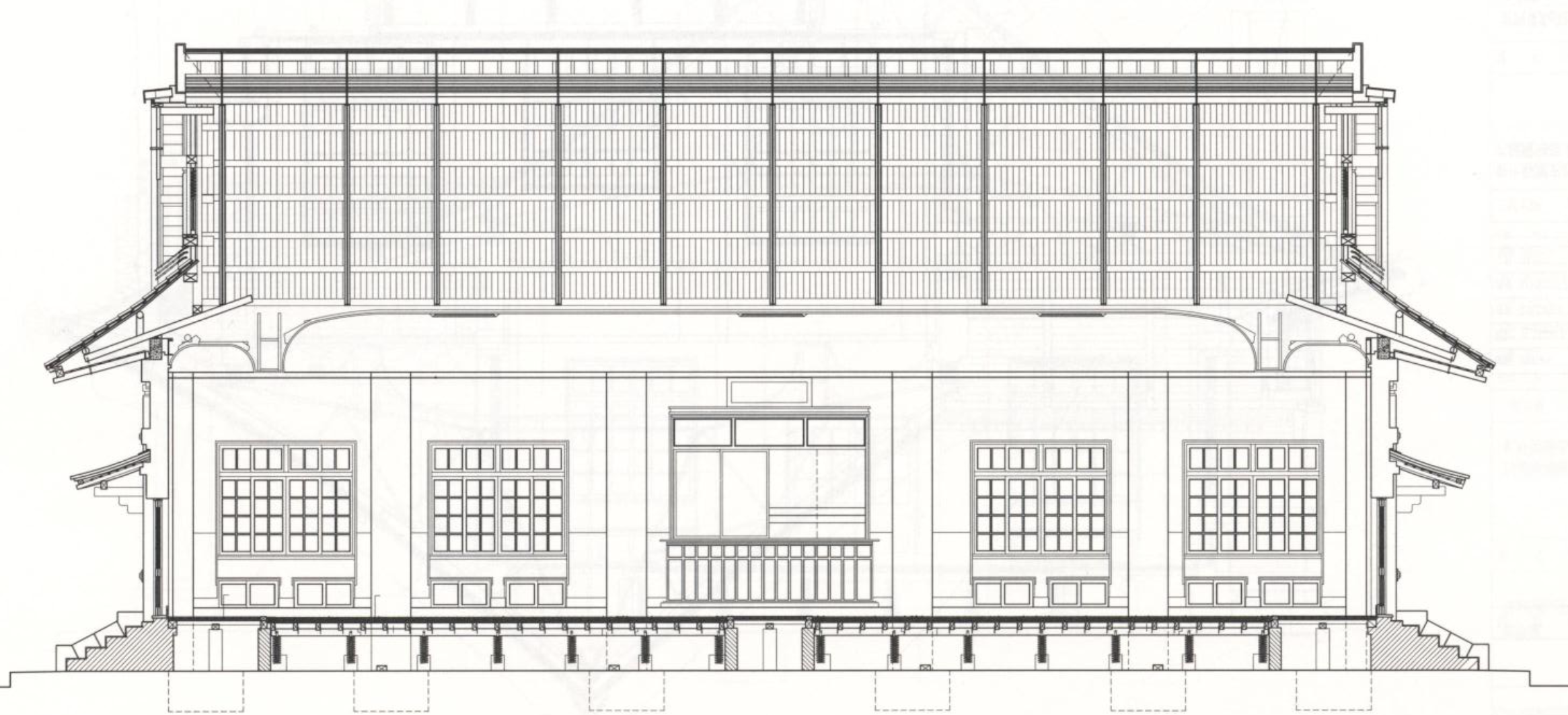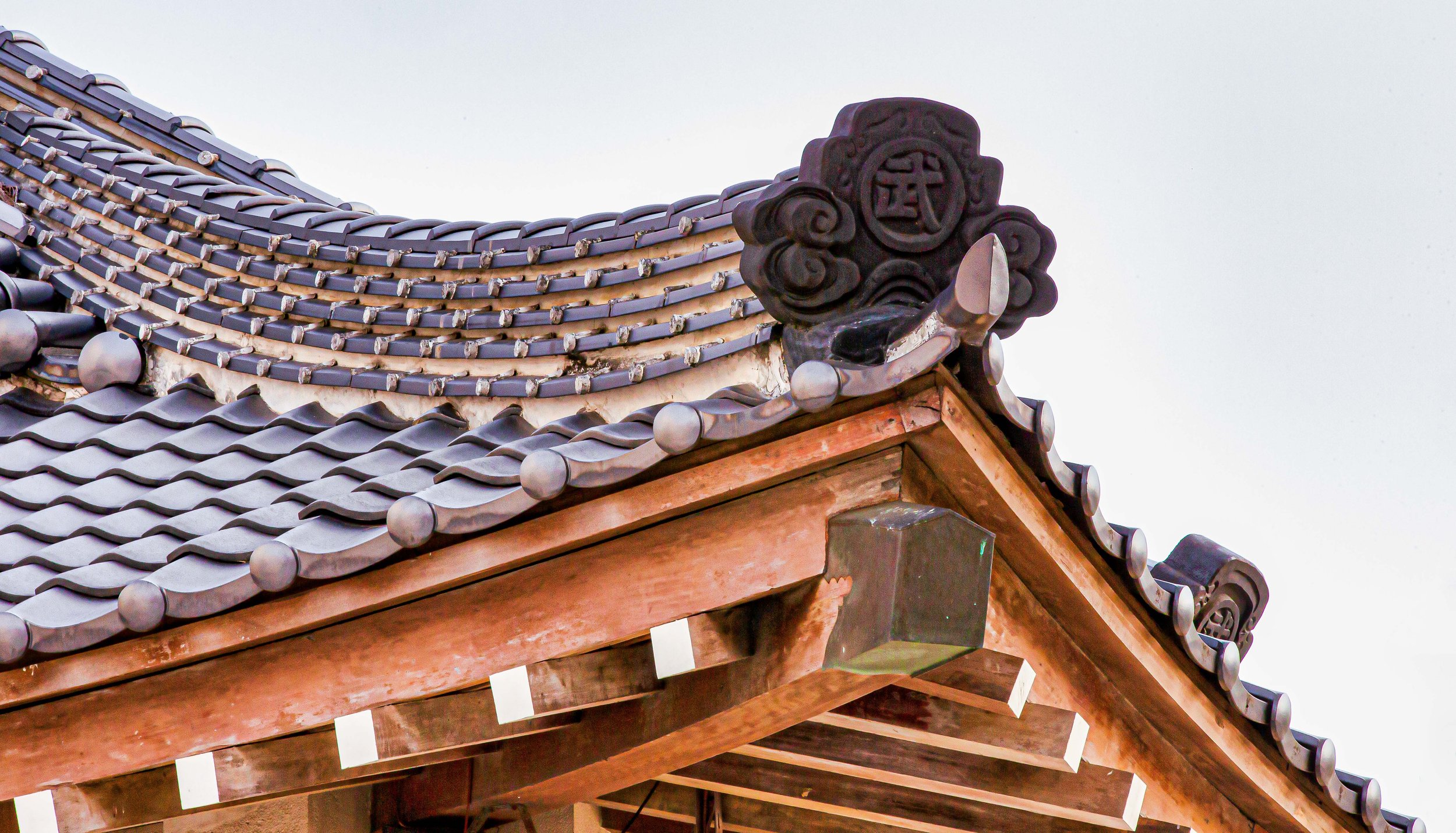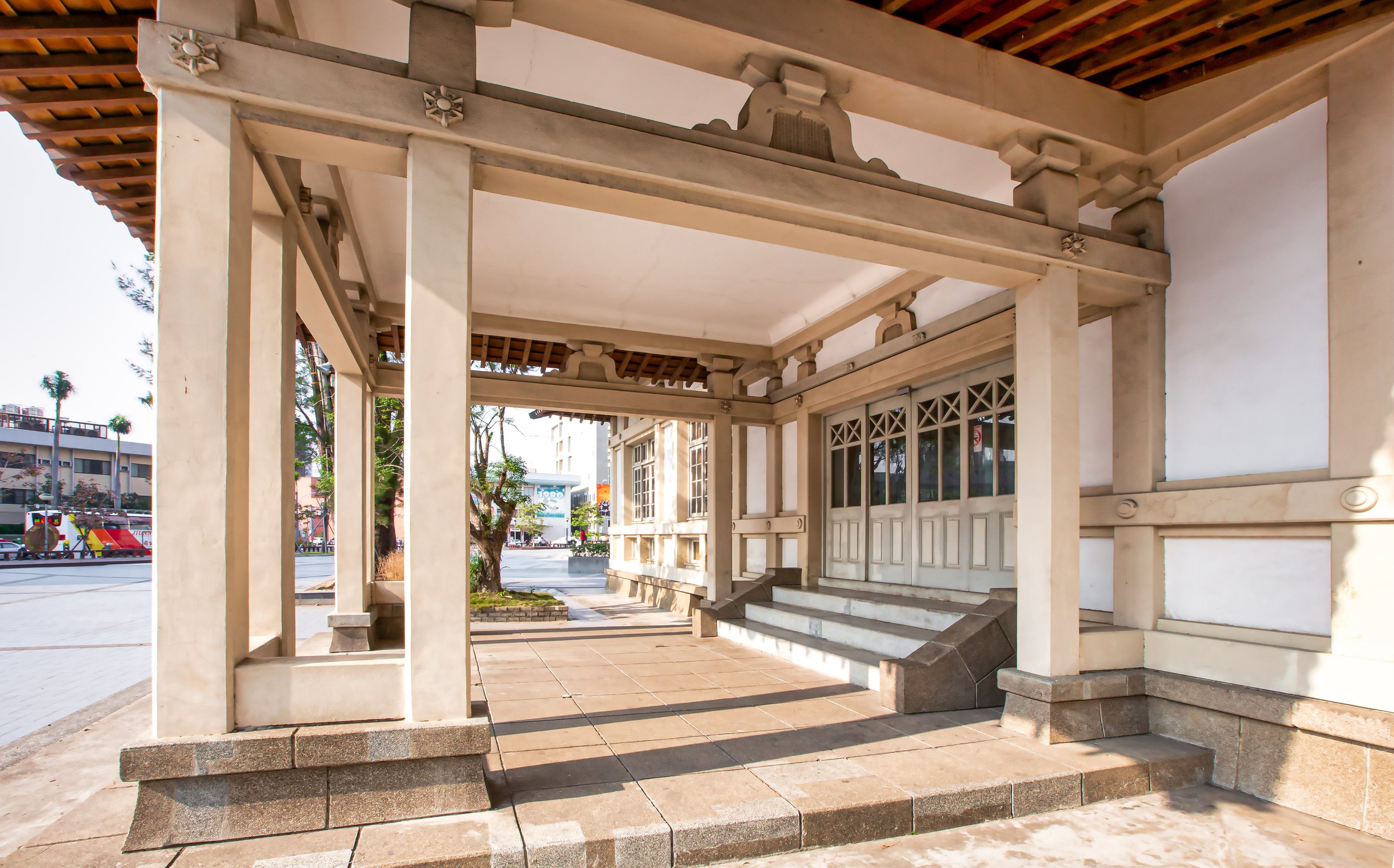Changhua County, in central Taiwan is an area that rarely receives the amount of attention it deserves, especially from tourists. The county sits on the western coast of the country and seems to have the unfortunate luck of being overshadowed by its popular neighbours, the city of Taichung (台中) to the north and the beautiful mountainous county of Nantou (南投) to the east.
A fast-growing industrial area that has attracted a lot of business thanks to the affordability of land and proximity to the Port of Taichung (台中港), Changhua has always been an ideal space for industry allowing the products that are manufactured there to be easily exported out of the country.
Few people however realize that Changhua has always been an important centre for trade and commerce with a history dating back hundreds of years to the Qing Dynasty. In fact, as one of Taiwan’s earliest centres for commerce, Changhua developed much earlier than other areas in Taiwan.
Like some of Taiwan’s other historic hot spots, Changhua not only developed at a fast pace but its residents earned a lot of money and in turn constructed extravagant places of worship which has left a historic footprint on the area that the people of today continue to enjoy.
With historic buildings dating back to the 1700s and a wealth of delicious local cuisine, it’s unfortunate that Changhua hasn’t been able to make more of a name for itself within foreign tourists circles - but locals will always tell you how great the area is, especially since many of Taiwan’s most traditional dishes originated there.
Visiting Changhua is a simple two hour train or bus ride from the capital and travel times are even shorter if you splurge and take the High Speed Rail - Once you’re there though you can easily walk the streets and soak up all that the city has to offer.
Among the long list of historic buildings in Changhua is one of the nation’s oldest temples and places of learning - The Changhua Confucius Temple. With a history dating back over three centuries, not only is the temple one of the oldest in Taiwan, it is also among a very exclusive list of truly historic places dedicated to the worship of Confucian philosophy.
Taiwan is home to well over a dozen temples dedicated to Confucius, but only in a few rare cases are they as historic or as culturally significant as the Changhua temple.
If you’d like to learn more about Taiwan’s Confucius Temples check out the guide I wrote which explains in more detail the history of Confucianism in Taiwan - The Confucius Temple’s of Taiwan.
The Changhua Confucius Temple
The Changhua Confucius Temple holds the distinction of not only being one of the oldest Confucius Temples in Taiwan but also the site of the oldest places of higher learning in Taiwan.
Dating back to 1723 (大清雍正四年), the temple is only pre-dated by the Fengshan Confucius Temple (鳳山舊城孔子廟) in Kaohsiung and the Tainan Confucius Temple (台南孔廟).
Like most historic structures in Taiwan however, in order to properly explain their history, you need to explain how they’ve been able to survive through the different periods of Taiwan’s colonial history.
In the case of this temple, its history has successfully spanned the latter stages of the Qing Dynasty, the Japanese Colonial Era and the current Republic of China-era which should be considered a feat given the fact that colonial regimes have a bit of a habit of tearing down reminders of the past.
Likewise, it is important to note that when it comes to the history of older temples like this, facts tend to become a bit convoluted and you often have to take some of their history with a grain of salt.
So before I start, let me state things clearly: This temple truly is several hundred years old BUT it is currently only a fraction of its original size and has been renovated and restored several times throughout its history. Suffice to say, what you see today isn’t what you would have seen a century or more ago.
Qing Dynasty (1723 -1895)
During the 17th Century, Changhua was one of the four main areas established in Taiwan for mass-immigration from the Chinese mainland. Its important to note that even though the Qing “controlled” Taiwan for over two centuries, they only controlled small portions of the country, mostly on the western coast and were uninterested in venturing any further, due to hostile indigenous peoples who were (for the most part) uninterested in interacting with them.
In 1723, Changhua was granted “county” status by the Qing Emperor thanks to the economic success of trade between the port town of Lugang (鹿港) and China’s Fujian Province (福建省).
With its official designation as a county (and the favourable economic situation), local officials were able to start urban development projects that not only included fortifications but the construction of places of cultural significance.
In the 4th year of the reign of Emperor Yongzheng (雍正), construction started on what would be the site of the Changhua Confucius temple. In addition to the temple, plans were made to construct an educational institute, Baisha Academy (白沙書院) next door which would serve as one of the foremost institutes for higher learning in Taiwan.
Note: Baisha Academy later moved and is currently known as the “National Changhua University of Education” (國立彰化師範大學).
In 1726, County Magistrate Zhang Gao (張縞) hired craftsman from China to come to Taiwan to construct the temple. The craftsman brought with them not only their expertise but also the necessary building materials and stone carvings that were pre-made by artisans in China.
A few decades later, in 1786, the original Minglun Hall (明倫堂) and Baisha Academy were burnt to the ground during an anti-Qing rebellion known as the Lin Shuang-Wen Incident (林爽文事件).
Then, in 1816, thirty years after Baisha Academy and Minglun Hall were destroyed, the local government put together a plan to rebuild the school in its original location. The site where Minglun Hall once stood however was replaced by a shrine dedicated to the God of Literature (文昌帝君) making the Confucius Temple a one-stop shop for all your academic needs.
In 1830, the temple underwent its final major renovation which saw the addition of several shrines and the difficult task of raising the foundation of the main hall by over two feet, completing the layout that we see today.
Japanese Colonial Era (1895 - 1945)
The Japanese Empire took control of Taiwan in 1895 and wasted no time instituting reforms that sought to drastically reshape the island’s infrastructure and economy. Not only was the existing railway system modernized, it was greatly expanded upon and eventually connected the entire island. The original walls constructed by the Qing around cities like Taipei, Hsinchu, Changhua, and Yilan (among others) were torn down and urban renewal plans transformed the look of many of Taiwan’s urban centres.
Changhua in particular is a case where you can still enjoy the mastery of Japanese urban planning - The roads in the city are much wider than areas around the country and the city is designed in a way that makes it easy to traverse (although later development has muddled that up a bit).
The projects undertaken by the Japanese however meant that the walled parts of the city weren’t going to be the only casualties to improving the city’s urban planning - Many homes and businesses also fell victim to the plans.
History has shown that the Japanese weren’t really big fans of temples dedicated to Confucius, so when it came time to widen the roads around the temple they came up with plans to tear it down completely.
These plans however met with staunch indignation and protests from the locals, so accommodations were made to preserve the temple. Baisha Academy however was torn down and relocated.
In 1933, local residents committed funds for a restoration project that would ensure the continued survival of the temple and improve the condition of the Main Hall.
Republic of China (1945 - Current)
In 1945, when the Second World War finally came to an end, as part of the terms of their surrender, the Japanese were forced to give up their colonies. The allied leaders (ambiguously) decided at the Cairo Conference that control of Taiwan would “returned” to Chiang Kai-Shek’s Republic of China.
The problem with the decision and the reason why it has remained ambiguous for so many decades is that the ‘Republic of China’ (中華民國) was a non-existent entity when the Japanese took control of Taiwan in 1895 and the Qing never really had any interest in fully controlling Taiwan.
The claim that Taiwan belonged to “China” was and still remains a contentious one.
Political arguments aside, (there is a reason why I mention this) the Nationalists at that time were embroiled in a bitter Civil War against the Communists and had little time to deal with what was happening in Taiwan.
For the first few years control of Taiwan was given to Garrison Commander Chen Yi (陳儀), an infamous figure in Taiwanese history who will forever be remembered as the architect of the 228 Massacre.
As the Communists declared victory in the Civil War though, Chiang Kai-Shek, his government, military forces and elite members of society retreated to Taiwan as a last ditch effort to regroup their forces and continue the struggle against the Communists.
Upon arrival, Chiang Kai-Shek inherited a well-developed island but the sudden influx of more than two million refugees put a considerable amount of strain on Taiwan’s existing infrastructure. This further enflamed tensions between the people of Taiwan (who in turn became second class citizens) and the refugees which contributed the a long period of Martial Law that ensued.
When the refugees first arrived the housing situation was quite dire, so to solve the problem, temporary measures were made to construct military communities. Additionally buildings like the Changhua Confucius Temple were opened up for people to take up short-term residency.
In 1949, permits were awarded to vendors to set up stalls at the temple gate in order to allow people to not only earn a living but to feed those living in the area. The vendors, in addition to the squatters living in the temple complicated the situation at the temple and its long-term health became an issue with the local population.
Due to the deterioration of the temple, the government drafted plans in the 1970s to tear it down and instead use the land to construct a shopping centre. The temple would then be relocated and reconstructed on Bagua Mountain (八卦山).
Once again the residents of Changhua were forced to stand up to yet another colonial regime to ensure the continued existence of their historic temple. The ensuing pressure that was put on the government forced officials to eventually capitulate to their demands and instead of tearing the temple down, they decided to instead restore it.
In the years since that restoration project was completed the temple has been awarded the designation of becoming a National Historic Site (國定古蹟), is recognized as one of the ‘Top Religious Sites’ in Taiwan and has become a popular tourist attraction.
Design
Confucius temples tend to be uniform in their simplicity - Unlike the overwhelming beauty of Taiwanese folk temples and Taoist temples - Confucius temples stand alone in their almost "zen-like" nature. You won’t find any shiny gold or bronze decorations nor will you find beautifully painted murals on the walls or hundreds of sticks of incense creating a haze throughout the temple.
The simplicity exhibited in the Confucius temples found throughout most of East Asia is a show of respect to Confucius as well as the importance of his philosophical views of education and his influence on Chinese culture and history.
One of the common features of all Confucius temples is that there is no imagery or statues of Confucius. This is a rule that goes back almost 500 years to the Ming Dynasty (明朝) when the emperor decreed that all Confucius temples should be uniform and only have "spirit tablets" (神位) rather than images of the sage.
The design of the Changhua Confucius Temple adheres to the most traditional construction standards for Confucius Temples. In fact, as I mentioned above, the original designers and craftsmen who constructed the temple were brought over directly from China for the sole purpose of building the temple.
Even though the temple we see today has pieces that were later added and others that have disappeared, the complex is still one of the best examples of traditional Confucius Temple design in Taiwan making it an important historical relic.
Lingxing Gate (櫺星門)
The Lingxing Gate acts as the main entrance to the temple and is a necessary part of any Confucius temple. The gate symbolizes Confucianism's ‘willingness to accept anyone with talent and virtue' and the name Lingxing refers to the Taoist Star of Knowledge (櫺星) whom Confucius is often regarded as a reincarnation of.
When it comes to the architecture of the Lingxing Gate at Taiwan’s Confucius Temple’s, the designs tend to vary. In some cases the gate may be a freestanding structure similar to that of a Torii at a Japanese Shinto Shrine. In other cases the gate may be constructed in the form of a building that has a wall on either side that helps to enclose the complex.
The Lingxing Gate at the Changhua Confucius Temple is a proper gate that connects to the perimeter of the temple. The design follows the ‘Five-Kaijian’ (五開間) style which means that the gate has five doors which are separated by pillars. The gate also has a roof that is separated into three different sections with a swallow-tail design at each end.
As is the case with other Confucius Temples, the Door Gods (門神) you typically find at other temples around Taiwan are absent and according to tradition are instead replaced simply with 108 metal studs.
Ji Gate (戟門)
The “Ji Gate” at the Changhua Confucius Temple was a ‘first’ in Confucian Temple design in Taiwan - While the gate is common in older Confucius Temple’s in China, here in Taiwan due to a lack of space these gates are usually left out when the temples were designed.
In Chinese, the word “Ji” (戟) refers to a hybrid-style weapon that was used for thousands of years by infantrymen in China. The weapon resembles a spear but also has an ax-dagger.
Tradition has it that when military personnel entered a Confucius Temple they would have to leave their weapons at the gate as a sign of respect for the sage.
The Ji Gate acts as the second gate of the Confucius Temple but like the Lingxing Gate before it, its huge doors are rarely ever opened. Instead the are two round doors to either side of the gate that provide entry to the main area of the temple complex.
The round doors are an absolute treat and are common in a lot of the historic temples in Changhua - unfortunately something that became a less common practice with newer buildings.
Dacheng Hall (大成殿)
The Dacheng Hall or “Hall of Great Perfection” is the main shrine area of a Confucius Temple.
The exterior of the hall is minimalist in design but you will want to pay close attention to some of the wooden carvings as well as the craftsmanship of the two stone dragon columns and the twenty other pillars that encircle the exterior.
The interior of the hall likewise is a simple set up with a shrine that has a Confucius Spirit Tablet (神位) in the middle with a table in front of it for offerings.
On either side of the Confucius shrine there are additional shrines with spirit plaques dedicated to the four sages (四配): Yan Hui (顏子), Zengzi (曾子), Zisi (子思) and Mencius (孟子) who were Confucian scholars and authored books expanding upon the Confucian philosophy.
Above the shrine are several plaques (御匾) that were placed by the Yongzheng Emperor (雍正), the Qianlong Emperor (乾隆), the Jiaqing Emperor (嘉慶), the Xianfeng Emperor (咸豐), the Tongzhi Emperor (同治), and former President Chiang Ching-Kuo (蔣經國), who all praised Confucius’ superior knowledge and personal character.
The plaques and their meanings are as follows:
Yongzheng Emperor (1726) - “生民未有” (A Person of Unsurpassed Intelligence)
Qianlong Emperor (1739) - “與天地參” (At One with the Heavens and the Earth)
Jiaqing Emperor (1798) - “聖集大成” (Combined Wisdom of the Sages)
Xianfeng Emperor (1851) - “德齊幬載” (All Encompassing Virtue)
Tongzhi Emperor (1862) - “聖神天縱” (Divine Wisdom)
President Chiang Ching-Kuo - “道貫古今” (Tao is Universal Through all Times)
Even though the Hall of Great Perfection is rather plain in comparison to Taiwan’s other temples you’ll still want to pay attention to some of the designs on the exterior, especially the two stone dragon columns - The pair of dragons date back to 1830 and are similar in design as they encircle the column. They differ only in the fact that one of them has a closed mouth while the other is open. Likewise the carved designs on the wooden gables are beautiful as well.
Chongsheng Shrine (崇聖祠)
As with tradition, the Chongsheng Shrine is located directly behind the Dacheng Hall and is used as a shrine room to venerate the ancestors of Confucius as well as the various Confucian sages and philosophers throughout history.
The shrine room is not unlike a shrine room that you'd find in any large Taiwanese home and is an important place for ancestral worship. It consists of an altar with spirit plaques and a couple of red lights. In front of the altar there is a table for placing offerings.
There are additionally two shrines both to the left and right of the main shrine but truthfully when I was there the shrines, which have several spirit plaques on them were blocked by stacks of benches. It would seem that the staff at the temple consider the shrine room to be more useful as a storage space than what it is actually supposed to be for.
Getting There
The Changhua Confucius Temple is conveniently located a short distance away from both the Changhua Train Station (彰化車站) and the Changhua Bus Terminal (彰化客運站).
The downtown core of the city is perfectly walkable and if you’re arriving by train or bus and want to visit some of the city’s historic sights, you’ll be happy to know that they are all relatively close to each other.
If you are driving a car I’d recommend simply finding a parking spot and getting rid of your car for the duration of your visit. The beauty of this historic city is best experienced on two feet and you will have definitely missed out on most of it if you’re driving.
You can find history (and amazing food) in every little alley in the city, so if you take the time and pay enough attention you’ll be able to learn quite a bit - and eat extremely well in the process.
The Confucius Temple is located at #30 Kongmen Street (孔門路30號).
The temple is open Tuesday - Sunday from 8:30am - 5:00pm.
It is only closed on Mondays, national holidays and on election days. Entry is free of charge.
If you’re walking from the train station simply cross the street and walk straight down Guangfu Road (光復路) until you reach Minsheng Road (民生路). From there make a right turn and continue walking straight until you reach the temple.
The Confucius Temple is also conveniently located near the base of Changhua’s historic Bagua Mountain (八卦山), so if you are driving a car you should be able to find adequate parking if you can’t find anything near the temple.
Within a short walking distance from the temple not only will you find a wealth of great food to eat, but the Bagua Mountain Great Buddha, Changhua Roundhouse, City God Temple, Mazu Temple, Martial Arts Hall, etc.
Taiwan is home to well over a dozen Confucius Temples but rarely are they as complete and as historic as the Changhua Confucius Temple. With an almost three century year history, this quiet little temple sitting the heart of historic Changhua City is one of the highlights of any visit to the area and if you are interested in Taiwanese history and traditional architecture, you’ll definitely want to stop by this one for a quick visit.
No matter where you live in Taiwan, I recommend hopping on a train for a day trip to this beautiful central Taiwan city where you’ll be treated to historic temples, amazing food and displays of Taiwanese culture that you so often miss if you spend all your time in Taipei.












































